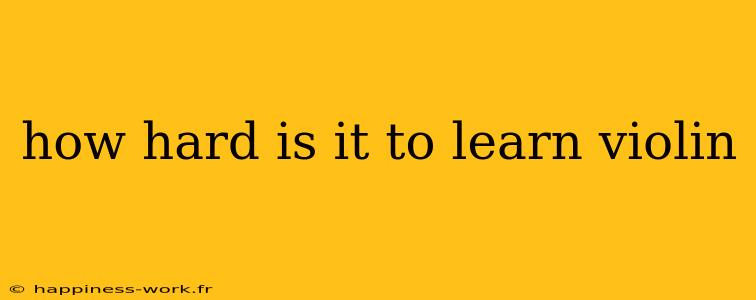Learning the violin can be an incredibly rewarding experience, but many potential students often wonder just how challenging the journey may be. In this article, we will explore various aspects of learning the violin, answering common questions and offering insights based on research and personal experiences.
What Makes Learning the Violin Challenging?
1. Physical Coordination
One of the biggest hurdles for beginners is the coordination required to play the violin. Unlike many other instruments, playing the violin involves the use of both hands in different ways: one hand to hold the bow and the other to press the strings. This dual action can be disorienting at first, as noted by WikiHow contributors.
Additional Analysis:
To overcome this physical challenge, it's beneficial to start with simple exercises that isolate each hand. For example, practice bowing exercises without using the left hand, and then switch to finger placement exercises without using the bow. These exercises can help build muscle memory and confidence before combining both elements.
2. Understanding Musical Notation
For those new to music, the violin's sheet music can seem daunting. The instrument primarily uses the treble clef, and reading music involves recognizing notes, rhythms, and dynamics.
Practical Example:
Consider starting with a beginner’s book that includes not only the notes but also finger positions and bowing techniques. Some popular beginner methods are the Suzuki Method and Essential Elements. These resources often incorporate fun exercises and familiar tunes that can make the learning process more enjoyable.
How Long Does It Take to Learn Violin?
The timeframe for learning the violin varies significantly among individuals. For some, basic proficiency might be achieved in 6 months to a year, while others might take several years to reach a higher level of skill.
Factors Influencing Learning Speed:
- Practice Frequency: Regular practice is key. Aim for at least 30 minutes a day, gradually increasing your time as you get more comfortable.
- Quality of Instruction: Taking lessons from a qualified instructor can dramatically shorten the learning curve. An instructor can provide personalized feedback and structured lessons tailored to your pace.
- Personal Dedication: Your motivation and love for the instrument can greatly influence how quickly you learn. Engaging with music outside of practice, like listening to violin pieces or attending concerts, can foster that dedication.
Is It Worth the Effort?
Absolutely! While the violin can be a challenging instrument to master, the rewards can be plentiful. You develop discipline, improve your cognitive skills, and experience the joy of making music.
Added Value:
As you embark on this journey, consider setting specific goals, such as learning a favorite piece or performing for friends and family. Celebrating small achievements can greatly enhance your motivation and enjoyment.
Conclusion
Learning the violin may present its challenges, but with dedication, the right resources, and consistent practice, you can undoubtedly overcome them. Whether you are drawn to classical music or contemporary tunes, the journey of mastering the violin will enrich your life in countless ways.
Final Tips:
- Stay Patient: Progress might feel slow at times, but perseverance is key.
- Record Yourself: Listening to recordings of your playing can provide insights and highlight areas for improvement.
- Join a Community: Connecting with fellow learners can provide support and encouragement.
In summary, while learning the violin is indeed a challenge, it is also a beautiful journey that opens up a world of musical opportunities. Happy playing!
This article incorporates content from WikiHow, emphasizing the challenges and rewards of learning the violin (source: WikiHow). Always seek out additional resources and continue to explore the rich landscape of violin music.
